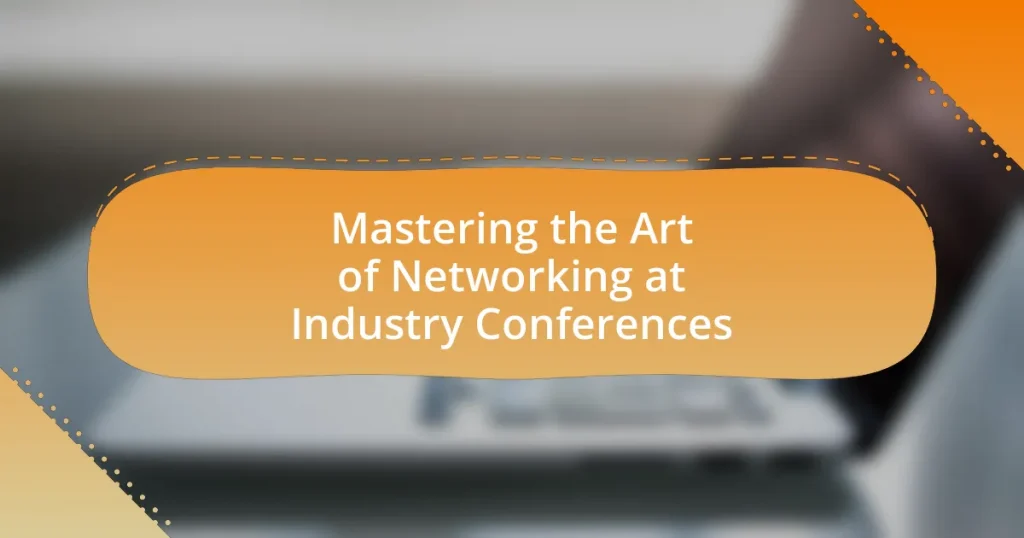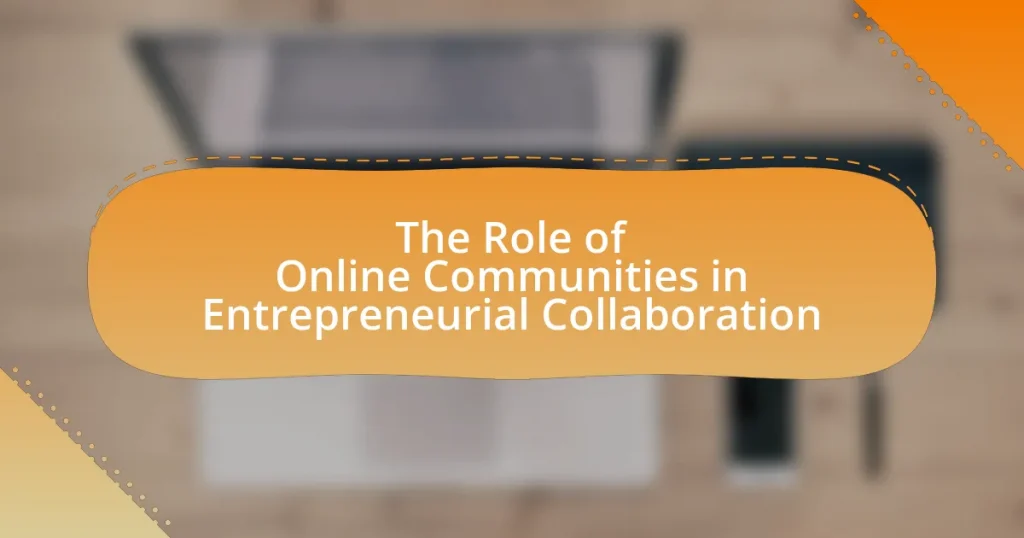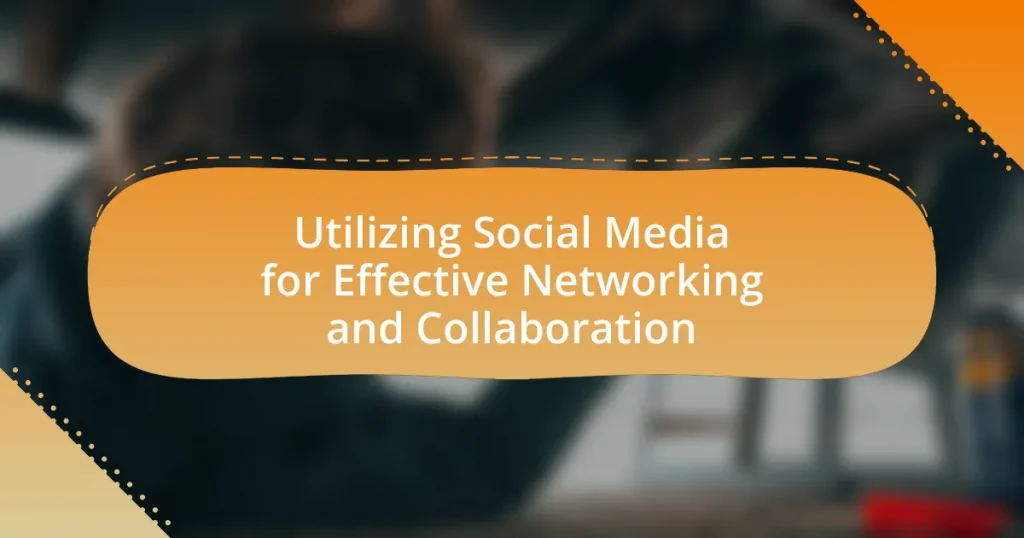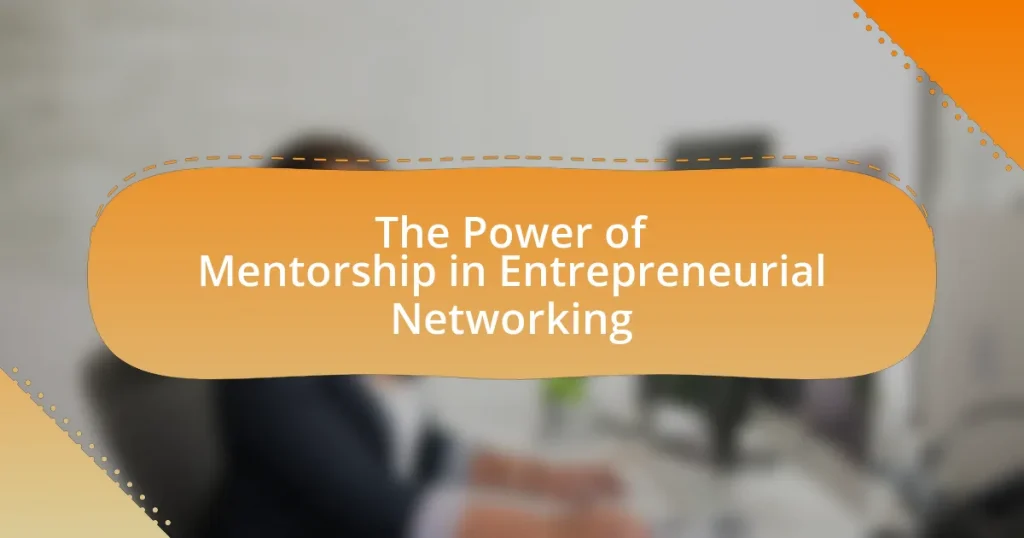The article focuses on mastering the art of networking at industry conferences, emphasizing its critical role in professional growth and opportunity creation. It highlights the importance of establishing valuable connections with peers and industry leaders, which can lead to job opportunities and collaborations. Key elements of effective networking, such as building genuine relationships, active listening, and follow-up communication, are discussed, along with strategies for preparing and engaging at conferences. The article also addresses common mistakes to avoid and best practices for maintaining connections, ultimately underscoring the significance of face-to-face interactions in fostering long-term professional relationships.

What is the importance of networking at industry conferences?
Networking at industry conferences is crucial for professional growth and opportunity creation. It allows individuals to establish valuable connections with peers, industry leaders, and potential collaborators, which can lead to partnerships, job opportunities, and knowledge sharing. According to a survey by the Event Marketing Institute, 84% of professionals believe that networking at events is essential for career advancement. This statistic underscores the significance of face-to-face interactions in building trust and rapport, which are often more effective than digital communications. Networking also facilitates access to industry insights and trends, enabling attendees to stay informed and competitive in their fields.
How does networking enhance professional relationships?
Networking enhances professional relationships by facilitating connections that lead to mutual support, collaboration, and opportunities for career advancement. Engaging with peers and industry leaders allows individuals to share knowledge, resources, and experiences, which strengthens trust and rapport. Research indicates that 70% of jobs are found through networking, highlighting its effectiveness in creating professional opportunities. Additionally, networking fosters a sense of community, encouraging ongoing communication and collaboration, which can lead to long-term partnerships and career growth.
What are the key elements of effective networking?
The key elements of effective networking include building genuine relationships, active listening, and follow-up communication. Building genuine relationships involves establishing trust and rapport with others, which can lead to meaningful connections. Active listening ensures that individuals understand the needs and interests of their contacts, fostering a two-way dialogue. Follow-up communication is crucial for maintaining connections, as it demonstrates commitment and interest in the relationship. Research indicates that 70% of jobs are found through networking, highlighting the importance of these elements in professional success.
How can networking lead to new opportunities?
Networking can lead to new opportunities by facilitating connections that can result in job offers, partnerships, or collaborations. When individuals engage in networking, they expand their professional circles, which increases the likelihood of being informed about openings or projects that align with their skills. According to a LinkedIn survey, 85% of jobs are filled through networking, highlighting the effectiveness of personal connections in the job market. Additionally, networking can provide access to industry insights and trends, enabling individuals to position themselves strategically for future opportunities.
Why are industry conferences ideal for networking?
Industry conferences are ideal for networking because they gather professionals from the same field, facilitating direct interactions and relationship-building opportunities. These events provide a concentrated environment where attendees can meet industry leaders, share insights, and explore potential collaborations. According to a survey by Eventbrite, 95% of professionals believe that face-to-face interactions are essential for building long-term business relationships, highlighting the effectiveness of conferences in fostering meaningful connections.
What unique opportunities do conferences provide for networking?
Conferences provide unique opportunities for networking by facilitating direct interactions among industry professionals, which can lead to valuable connections and collaborations. These events often feature structured networking sessions, workshops, and social gatherings that encourage attendees to engage with one another in a focused environment. For instance, according to a study by the Event Marketing Institute, 84% of attendees at industry conferences find networking to be a primary reason for their participation, highlighting the importance of face-to-face interactions in building professional relationships. Additionally, conferences often attract a diverse range of participants, including thought leaders and decision-makers, which enhances the potential for meaningful connections that can influence career advancement and business opportunities.
How does the environment of a conference facilitate connections?
The environment of a conference facilitates connections by creating a structured setting where attendees can engage in face-to-face interactions. This setting encourages networking through scheduled sessions, workshops, and informal gatherings, allowing participants to share ideas and establish relationships. Research indicates that 70% of professionals believe that in-person interactions are more effective for building trust and rapport compared to virtual communications. Additionally, the physical proximity of diverse attendees fosters spontaneous conversations, enhancing the likelihood of forming valuable connections.
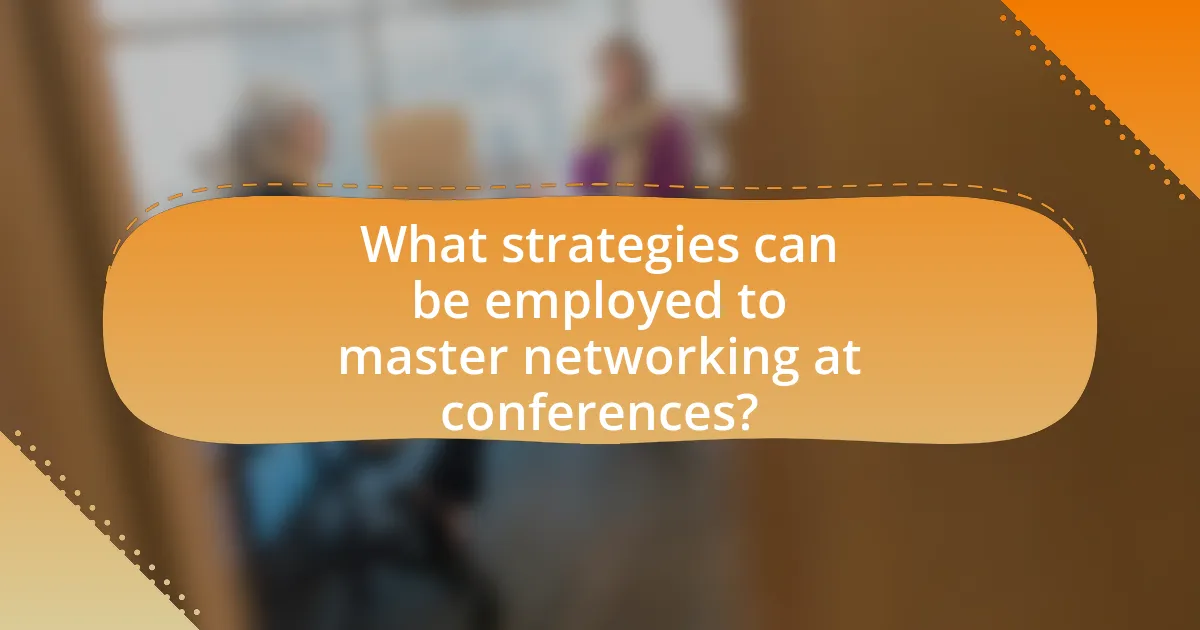
What strategies can be employed to master networking at conferences?
To master networking at conferences, individuals should employ strategies such as setting clear goals, preparing an elevator pitch, and actively engaging with attendees. Setting clear goals helps define what one aims to achieve, such as making specific connections or gathering industry insights. Preparing an elevator pitch allows for concise self-introduction, making it easier to communicate one’s value and interests effectively. Actively engaging with attendees, through asking questions and participating in discussions, fosters meaningful connections. Research indicates that effective networking can lead to increased opportunities, with a study by the Harvard Business Review showing that 70% of jobs are found through networking.
How can one prepare for networking at an industry conference?
To prepare for networking at an industry conference, one should research attendees and speakers in advance. This preparation allows individuals to identify key contacts and tailor their conversations to specific interests or needs. According to a study by the Event Marketing Institute, 84% of event attendees prioritize networking opportunities, highlighting the importance of being proactive in making connections. Additionally, creating a personal elevator pitch and practicing it can enhance confidence and clarity during interactions.
What research should be conducted before attending?
Before attending an industry conference, individuals should research the event’s agenda, speakers, and attendees. Understanding the conference schedule allows attendees to prioritize sessions that align with their professional interests and goals. Additionally, researching speakers provides insights into their expertise and potential networking opportunities. Analyzing the attendee list helps identify key contacts and potential collaborators, enhancing the networking experience. According to a study by the Event Marketing Institute, 84% of attendees find networking opportunities to be a primary reason for attending conferences, underscoring the importance of thorough preparation.
How can setting goals improve networking outcomes?
Setting goals can significantly improve networking outcomes by providing clear direction and focus during interactions. When individuals establish specific, measurable, achievable, relevant, and time-bound (SMART) goals, they are more likely to engage in meaningful conversations that align with their objectives. Research indicates that goal-setting enhances motivation and accountability, leading to more productive networking experiences. For instance, a study published in the Journal of Applied Psychology found that individuals who set clear goals were 20-25% more effective in achieving desired outcomes compared to those who did not set goals. This structured approach enables individuals to identify key contacts, prepare relevant questions, and follow up effectively, ultimately resulting in stronger professional relationships and opportunities.
What techniques can enhance networking effectiveness during conferences?
Effective networking during conferences can be enhanced through techniques such as setting clear objectives, utilizing social media, and engaging in active listening. Setting clear objectives allows attendees to focus on specific goals, such as meeting industry leaders or exploring collaboration opportunities, which increases the likelihood of meaningful connections. Utilizing social media platforms like LinkedIn before, during, and after the event can facilitate introductions and follow-ups, as studies show that 70% of professionals find networking through social media effective. Engaging in active listening fosters genuine conversations, making others feel valued and encouraging reciprocal engagement, which is crucial for building lasting relationships.
How can one initiate conversations with strangers?
To initiate conversations with strangers, one can start by making eye contact and offering a friendly smile, which establishes a welcoming atmosphere. Following this, introducing oneself with a simple greeting and a relevant question about the event or shared environment can effectively break the ice. Research indicates that open-ended questions encourage dialogue, as they invite the other person to share their thoughts and experiences, fostering a connection. For instance, asking, “What brought you to this conference?” not only shows interest but also provides an opportunity for the other person to engage in conversation.
What role does body language play in networking?
Body language plays a crucial role in networking by conveying confidence, openness, and engagement, which are essential for building connections. Nonverbal cues such as eye contact, posture, and gestures significantly influence first impressions and the overall effectiveness of interactions. Research indicates that 93% of communication effectiveness is determined by nonverbal cues, highlighting the importance of body language in establishing rapport and trust during networking events.

What follow-up actions are crucial after networking at conferences?
Crucial follow-up actions after networking at conferences include sending personalized thank-you emails, connecting on professional social media platforms, and scheduling follow-up meetings. Sending thank-you emails reinforces the connection made and shows appreciation, which can lead to stronger relationships. Connecting on platforms like LinkedIn allows for ongoing engagement and sharing of relevant content, enhancing visibility and collaboration opportunities. Scheduling follow-up meetings provides a chance to discuss potential partnerships or projects in detail, solidifying the networking effort into actionable outcomes. These actions are supported by research indicating that effective follow-up can increase the likelihood of successful professional relationships by up to 70%.
How can one maintain connections made at conferences?
To maintain connections made at conferences, one should regularly follow up with contacts through personalized emails or messages. This approach reinforces the initial connection and shows genuine interest in the relationship. Research indicates that maintaining professional relationships can lead to increased opportunities, as 70% of jobs are found through networking, according to a study by the Bureau of Labor Statistics. Additionally, engaging with contacts on social media platforms like LinkedIn can keep the relationship active and provide updates on each other’s professional journeys.
What methods are effective for following up with new contacts?
Effective methods for following up with new contacts include sending personalized emails, connecting on professional social media platforms, and scheduling follow-up meetings. Personalized emails should reference specific conversations or shared interests to reinforce the connection. Connecting on platforms like LinkedIn allows for ongoing engagement and visibility into each other’s professional activities. Scheduling follow-up meetings can facilitate deeper discussions and strengthen relationships. Research indicates that personalized communication increases response rates by up to 29%, highlighting the importance of tailored follow-ups in networking.
How can social media be leveraged for ongoing networking?
Social media can be leveraged for ongoing networking by actively engaging with industry peers and thought leaders through platforms like LinkedIn and Twitter. By sharing relevant content, participating in discussions, and joining industry-specific groups, individuals can maintain visibility and foster relationships over time. Research indicates that 70% of professionals use social media to network, highlighting its effectiveness in building connections. Additionally, utilizing features such as direct messaging and commenting on posts allows for personalized interactions, further strengthening professional ties.
What common mistakes should be avoided in networking at conferences?
Common mistakes to avoid in networking at conferences include failing to prepare, neglecting follow-up, and focusing solely on personal gain. Preparation is crucial; individuals should research attendees and create a strategy for meaningful interactions. Neglecting follow-up can lead to missed opportunities; studies show that 80% of business deals require five follow-ups to close. Focusing solely on personal gain can alienate potential connections; networking is most effective when approached with a mindset of mutual benefit.
How can over-enthusiasm hinder networking efforts?
Over-enthusiasm can hinder networking efforts by overwhelming potential connections and creating discomfort. When individuals exhibit excessive eagerness, they may dominate conversations, making it difficult for others to engage or express their own thoughts. This behavior can lead to perceptions of insincerity or desperation, which can deter meaningful interactions. Research indicates that effective networking relies on balanced communication, where active listening and mutual exchange are prioritized. Therefore, maintaining a measured approach is essential for fostering genuine relationships in networking scenarios.
What are the pitfalls of ineffective communication during networking?
Ineffective communication during networking can lead to misunderstandings, missed opportunities, and damaged relationships. Misunderstandings arise when messages are unclear, causing confusion about intentions or interests. This can result in missed opportunities, as potential collaborations or partnerships may be overlooked due to a lack of clarity in communication. Additionally, damaged relationships occur when individuals feel disrespected or undervalued due to poor communication, which can hinder future interactions. Research indicates that effective communication is crucial for building trust and rapport, essential elements in networking contexts.
What are the best practices for successful networking at industry conferences?
The best practices for successful networking at industry conferences include preparing in advance, actively engaging with attendees, and following up after the event. Preparation involves researching attendees and speakers, setting specific goals for networking, and having business cards ready. Engaging actively means initiating conversations, asking open-ended questions, and listening attentively to others, which fosters meaningful connections. Following up is crucial; sending personalized messages or connecting on professional platforms like LinkedIn reinforces relationships and keeps the conversation going. These practices are supported by studies indicating that effective networking can lead to increased opportunities and collaborations, highlighting the importance of strategic engagement in professional settings.
How can one create a memorable personal brand during networking?
To create a memorable personal brand during networking, one should consistently communicate a clear and authentic message that reflects their unique value proposition. This involves defining personal strengths, skills, and experiences that differentiate them from others in their field. For instance, a study by the Harvard Business Review indicates that individuals who articulate their personal brand effectively are 70% more likely to be remembered by their peers. Additionally, utilizing storytelling techniques to share personal experiences can enhance relatability and engagement, making interactions more impactful. By actively listening and asking insightful questions, one can also foster deeper connections, reinforcing their brand as approachable and knowledgeable.
What tips can help in building lasting professional relationships?
To build lasting professional relationships, prioritize effective communication and active listening. Effective communication fosters clarity and understanding, while active listening demonstrates respect and engagement. Research indicates that strong interpersonal skills, including these two elements, significantly enhance relationship-building in professional settings. For instance, a study published in the Journal of Business and Psychology found that individuals who actively listen are perceived as more trustworthy and competent, which is crucial for establishing long-term connections. Additionally, consistently following up after initial meetings reinforces the relationship and shows commitment, further solidifying professional ties.
